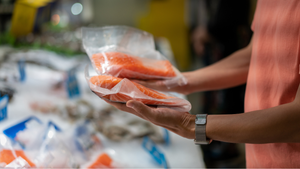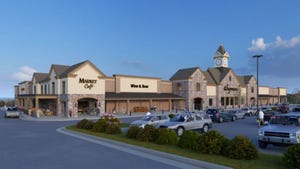Are You Meeting Scope 1, 2 and 3 Emissions Goals Like Your Competitors?Are You Meeting Scope 1, 2 and 3 Emissions Goals Like Your Competitors?
See how CPG expectations will drive your sustainability metrics. Customers, competitors, investors and even CPG brands expect meaningful sustainability improvements from grocers.
April 16, 2019

Grocers are feeling pressure from consumers to improve their sustainability measures and lower their greenhouse gas emissions. The emissions that organizations typically prioritize are defined by the Greenhouse Gas Protocol as Scope 1 and Scope 2 emissions. Scope 1 emissions are generated directly from sources that are owned by an organization, and Scope 2 emissions are produced by the generation of the electricity an organization purchases.
But grocers are also part of the value chain for food brands who require lower emissions of their partners from farm to fork. These emissions from a company’s suppliers, distributors and external partners up and down the distribution channel are defined as Scope 3 emissions. Many large food and beverage brands such as Kellogg, Danone and Nestlé have Scope 3 emissions goals in place that could affect the entire distribution chain, including distribution centers and retail facilities owned by grocers.
Retailers not only want to respond to the desires of their customers and the requirements of the consumer brands they sell, but they also want to contribute to the sustainability of the planet by setting goals and Scope 3 emission standards of their own. Sustainability initiatives have accelerated among grocers as retailers such as Target, Walmart and CVS Health lead the way in developing Scope 3 emissions goals that will soon be the expectation among retailers.
The good news is that improving sustainability is not only good for the environment, but it can also be good for profits. In supermarkets, the U.S. government program Energy Star estimates $1 in energy savings is equal to $59 in sales. Luckily, the rising expectations for sustainability are also driving the development of new technologies that lower emissions and costs for food production, distribution and retail.
One technology that can help grocers decrease their Scope 2 and Scope 3 emissions and address the particularly high operating costs of refrigeration is Thermal Energy Storage (TES). TES systems from Viking Cold decrease energy consumption in frozen food distribution centers and walk-in freezers by an average of 26%. With refrigeration being one of the largest energy consumers in grocery, TES makes a sizable and immediate impact on sustainability while adding to the bottom line.
TES systems are comprised of phase change material (PCM), intelligent controls and 24/7 monitoring and notification services. The PCM, which is easily installed near the top of the freezer, adds thermal mass inside the freezers without utilizing any usable storage space. As the PCM transitions between solid and liquid states it absorbs 300 times more heat than frozen food and consolidates up to 85% of the heat infiltration directly in the refrigeration air flow. TES systems’ intelligent controls balance temperature requirements, refrigeration run time, and energy usage which allows refrigeration to be cycled off for up to 13 hours per day while better protecting the food.
Customers, competitors, investors and even the CPG brands retailers sell are incentivizing meaningful improvements in sustainability measures. Some retailers are responding and some are leading the way. Whether grocers have defined their Scope 1, 2, or 3 goals or not, carbon reduction and profit improvements can be immediately realized by implementing technologies like Thermal Energy Storage across their operations.
You May Also Like





